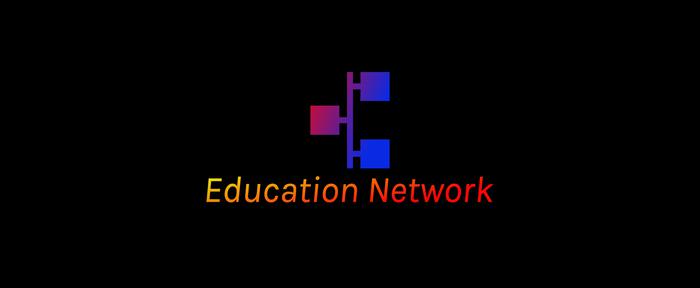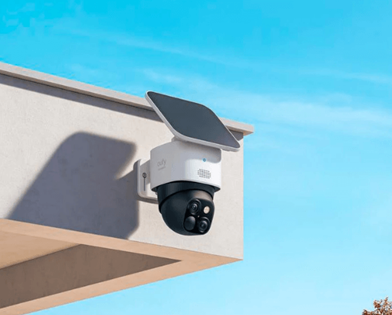PHILADELPHIA — At first, Marie Wilkins-Walker was just happy to be back in a classroom. Wilkins-Walker teaches career and technical education at West Philadelphia High School, where she has worked for a decade. Her classes focus on computer systems networking; students earn certificates for jobs in fields like IT while also providing tech support to the high school.
Much as she loves technology, Wilkins-Walker said, “I have never wanted to be an online teacher.”
Last school year she taught to a Chromebook, filled with dark squares where kids’ faces ought to have been. “I often spent the evenings wondering whether I am showing up with my best,” recalled Wilkins-Walker, who sometimes worked alongside her 12-year-old grandson who’d come to live with her during the pandemic. “I think my answer was ‘no’ most of the time.”
The return to class in the fall was a relief. She relished even the frown lines on students’ faces, signs that she needed to linger on a topic. But by week seven or so of school, the cracks from the past year began to show.
Basic tasks like following written directions eluded students. In normal times, students enrolled in her courses as 10th graders already knew how to navigate high school life. But this year’s crop of sophomores seemed less confident and less responsive than she remembered.
On the floor below Wilkin-Walker’s classroom, David Thiebeau had begun to notice similar challenges. “It’s becoming blatantly apparent that the year they spent in remote learning did not allow them to mature properly,” said Thiebeau, who teaches biology and forensics in a room decorated with animal bones and a taxidermied bear head.
“It’s essentially like my 10th graders are eighth graders and my ninth graders are seventh graders,” Thiebeau said.
“The pandemic will create that dropout crisis if schools just focus on 11th and 12th graders and trying to catch them up. They’ve got to have a focus on the younger students, on the students who are transitioning to high school.”
Students seemed angrier than they’ve ever been, said West Philadelphia Principal Marla Travis-Curtis. For a stretch this fall, fights broke out almost daily at the school, teachers said. In some classes, grades were down. Of the 10th graders enrolled in his Algebra I and Algebra II classes first semester, math teacher Khalil Williams estimated that only about 60 percent were on track to pass — and that was among the students who showed up for class. Overall, it was about 40 percent. Schools in Philadelphia are following a new bell schedule this year due to a bus driver shortage, and Williams’ first period algebra class started at a yawn-inducing 7:30 a.m.
Research shows that whether students finish high school is largely determined by their first year. Ninth graders who are on track are at least three times more likely to graduate. First year performance is also predictive of college success.
At West Philadelphia High School, before the pandemic, the four-year graduation rate was 65 percent, 11 points below the city average. But administrators and teachers had been trying to keep students engaged in learning and thinking about their futures, and the graduation rate had begun to tick up ever so slightly.
Related: More studies mark the pandemic’s toll on student achievement
Now, at the high school and others like it around the country, educators and experts worry that the pandemic will not only knock older high schoolers off track but contribute to more ninth and 10th graders leaving. That could reverse decades-long progress in improving graduation rates, and deepen socioeconomic and racial divides.
A growing body of research suggests that Black students are among those most harmed academically by the pandemic and the chaotic shift to online learning; 91 percent of West Philadelphia’s students are Black, compared to a little over half of students in the district as a whole.
Covid and remote learning “created a situation where kids didn’t have the opportunity to learn how to do high school,” said Kaaren Andrews, the national director of the Center for High School Success, which works with schools to improve graduation rates. “The pandemic will create that dropout crisis if schools just focus on 11th and 12th graders and trying to catch them up. They’ve got to have a focus on the younger students, on the students who are transitioning to high school.”
West Philadelphia High School is exactly the sort of place experts are worried about: a school least prepared for the pandemic’s disruptions, located in a community the virus hit hardest. At West, students’ needs are intense and concentrated, and academic gains were fragile and halting before Covid complicated many aspects of students’ academic and personal lives.
But there are early signs that the school’s efforts to stem the worst of the pandemic fallout may be helping.
West is housed in a bright, 17,000-square-foot building constructed in 2011, and has committed teachers and an energetic principal. Before the pandemic, Travis-Curtis had placed a big focus on senior year and made it a goal to get every 12th grader to graduate and be accepted into college.
More than 80 percent of the school’s roughly 500 students are classified as economically disadvantaged. Meanwhile, nearly 40 percent are enrolled in special education; districtwide, it’s 15 percent.
Philadelphia’s tiered education system, which received a partial overhaul this past fall, has funneled high-performing students into admissions-only high schools and charter schools and concentrated those with greater needs in nonselective schools like West Philadelphia, which must work overtime with few resources to keep kids on track.
When Travis-Curtis became principal in 2019, enrollment was plummeting. Though it is located in a gentrifying section of West Philadelphia, new residents to the neighborhood were sending their children to private or parochial schools or special-admission city high schools instead. It didn’t help that the high school had consistently struggled to meet academic benchmarks and had been the focus of a tumultuous school turnaround plan.
Travis-Curtis, who grew up in the city and graduated from the Philadelphia High School for Girls, a public magnet school, set about increasing enrollment by recruiting students from across the city. Then the pandemic arrived.
Related: ‘I can’t do this anymore’: How four middle schoolers are struggling through the pandemic
Online learning was challenging for many students. Some kids went months and months without Chromebooks; others never logged on at all. “We lost a lot of kids that way,” said Brandon Barney, an English language arts teacher. The graduation rate remained steady, and even rose to 67 percent in 2021. But that was in part because teachers adjusted their expectations. Kids who logged on at least sometimes tended to pass their classes. Even so, only two-thirds of ninth graders finished the remote learning year on track for graduation, meaning they received a credit in each core subject plus one additional subject.
The online experience for first-year students, perhaps more than for any other cohort, was lacking. In normal times, they spend the year in a “freshmen academy.” They take classes in one section of the building, apart from older students, participate in after-school activities, and receive mentoring and other support. The goal is to help ease the transition to high school, make them feel welcomed and supported, and build a sense of community. The school tried to run some of those activities online, but it wasn’t the same.
Coming into this fall, Travis-Curtis tried to set West on a forward path. Her staff visited eighth grade classrooms across the city to encourage students to enroll at West and managed to double the size of the freshman class, to roughly 200.
“They don’t have the language for it, but they are simply overwhelmed. They don’t realize that what they likely need is counseling support, mental health support, but that’s keeping them from following through on day-to-day tasks.”
She changed the school schedule, introducing a 4×4 system, also known as block scheduling, so that students who failed a class wouldn’t have to wait a year to repeat it. Under the system, students take four 90-minute classes each day for a semester, rather than eight classes over the course of a year. Research suggests the schedule can smooth the transition to high school and boost graduation rates by minimizing the number of transitions students experience and build stronger student-teacher relationships.
In addition, Travis-Curtis assigned every student to a staff member who was meant to keep an eye out for them, make sure they were attending classes and eating breakfast and lunch. For the first time, all students attended a daily advisory class, where they were part of a small cohort that received support from a teacher, and participated in a districtwide curriculum to build social and emotional skills. Travis-Curtis also organized a schoolwide trip to Washington, D.C.
At first, the transition back was joyous, but the deeper teachers and students got into the fall semester, the more they worried about what lay ahead.
On a weekday in November, Williams, the math teacher, leaned over a cluster of desks, helping his students through a problem set. The 26-year-old can relate to many of his students, having grown up in public housing in Newark, New Jersey, raised by a single mother.
In middle school, he was selected for the Rutgers Future Scholars Program, which provides academic support and college scholarships to low-income students. Despite the program’s guidance, he missed a lot of class in high school, got some Ds and Fs, and was barely accepted to Rutgers University-Newark. His love of math, though, carried him through.
He tries to spark that same passion in students, but it’s been challenging. As Williams talked, a student slumped at a desk, asleep.
“I try to be patient with them,” Williams explained later. In the past, he might slam a book on a desk to wake up a student, he said, but this school year he’s taking a gentler approach. Sleeping students don’t disrupt others, and sometimes a kid needs rest. “I can work with that,” said Williams.
So many of his 10th graders, in particular, were struggling. Every night, as Williams was falling asleep, he pictured his classroom seating chart — the kids who were passing were blue squares, and the kids who were failing were red. “Blue squares amongst a blanket of red,” said Williams. “It’s a weird feeling,” he added. “I’m used to all my kids ending the year passing.”
Related: ‘It’s so hard and so challenging’: An oral history of year three of the pandemic

Other teachers have also modified the way they teach. Thiebeau, the biology teacher, watched from behind his desk while a student teacher from Drexel University stood before the class, holding up a drawing illustrating cell transfer. The students had already been introduced to this material several times in different formats, said Thiebeau.
This year, he said, students were harder to engage, they were deep in their phones, often they didn’t appear to be listening at all. Students came and went; in one of his biology classes, maybe half the students showed up each time.
In past years, students could focus for perhaps 25 to 30 minutes of instruction before breaking into smaller groups; now, it was down to 15 to 20 minutes, he said. The school’s high share of students in special education means many students required aides or extra support for disabilities in reading, math and behavior but didn’t necessarily receive it. Even in easier times, it was difficult to manage a classroom of 33 kids at different levels, with different needs and with so little support.
Some students had new demands on their schedules too. More of them had taken jobs in fast food and retail when the adults in their lives lost work during the pandemic. A few had dropped out of school for work, said Travis-Curtis, while others were trying to balance jobs and classes. “Some of them liked making money so much that school became less of a priority for them,” she said. So far this year, roughly 1 in 6 students has been chronically truant, meaning they logged 10 or more unexcused absences.
DawnLynne Kacer, who oversees the Philadelphia school district’s Opportunity Network and its Re-engagement Center, which works to re-enroll students who’ve dropped out, said teenagers as young as 15 and 16 were getting full-time jobs and barely attending school. “We are competing with the Targets and Whole Foods and restaurants and retail sector here in this city,” she said. “A lot of these jobs are paying two or three times what they were a few years ago.”
Low pay had in the past motivated students to finish their degrees so they might earn higher wages, educators said; today, the opposite is true.
“Some of them liked making money so much that school became less of a priority for them.”
Covid had also intensified other reasons students left school, she and others said: They were falling behind on credits and feeling adrift academically, they had family responsibilities, or struggled with a crisis such as homelessness, addiction or gun violence. (Philadelphia’s rates of gun violence have spiked in recent years: There were 486 fatal shootings in the city in 2021, 23 percent higher than 2020 and a 95 percent rise compared to 2016.)
At West Philadelphia, churn was another factor: Many students from other neighborhoods found the commute too long and signed up to transfer to a new high school, then never showed up. This year, of the 100 sophomores on West’s rolls last August, fully 29 students had left and subsequently enrolled at other high schools and another seven never attended at all. Meanwhile, 36 students had enrolled at West after the first day of school, most of them in September.
Across the city, students felt defeated and lost. “They don’t have the language for it,” said Kacer, “but they are simply overwhelmed. They don’t realize that what they likely need is counseling support, mental health support, but that’s keeping them from following through on day-to-day tasks.”
Related: More studies mark the pandemic’s toll on student achievement
Despite the obstacles, Kymani, a sophomore at West Philadelphia High, was determined to graduate on time in 2024. But she worried that a year of remote learning would make high school more stressful than it needed to be.
Kymani had spent the 2020-21 school year at Crossroads Accelerated Academy, a program to help students who are overage in middle school catch up and finish high school on time. At home in front of her Chromebook, she struggled to get motivated for her online courses. “My grades went up and down because I wasn’t joining classes,” she said. “I was usually asleep.”
Her social life felt empty too. A track and field runner, she missed competitions, and now ran alone on a trail in the woods not far from her house. When it came time to choose a school for sophomore year, she applied to West, her great-grandmother’s alma mater.
In-person classes were a relief. She liked hands-on learning. The water labs in biology class this fall filled her mind with ideas about scientific discovery. Her grades were Bs, Cs and Ds. But she wondered how much better she’d be doing were it not for her time spent in online learning. “I would have been more engaged and had someone to talk to when I needed help,” said Kymani. Second semester, she struggled in English and environmental science, and sometimes worried about passing.
Still, time in quarantine had produced some positives. Being around her younger sister all day had prompted her to be more of a role model.
At West, Kymani joined the track and field team. Her coaches said she could qualify for a scholarship if she kept her grades up, she said. After high school, she was thinking about attending the University of Maryland, or Marshall University, in West Virginia, because she’d seen a TikTok post about its track team.
After that, Kymani said, she might pursue a career as a track coach, lawyer or veterinarian — but not in Philadelphia. “It’s not that safe to raise your children in because people are dying every day,” she said.
Barney, the West Philadelphia English teacher, said he wished educators would use this moment to rethink the system. “It feels like there’s a sense that we have to catch these kids up after last year and we’ve given them unrealistic workloads and expectations,” he said. “A lot of them seem very tired and burnt out.”
The usual methods of teaching were no longer working for his students, he said, if they had ever worked at all. If Barney had followed his textbook, his 11th graders would have started their year reading “Of Plymouth Plantation” by 17th century settler William Bradford — a difficult text with almost no relevance to his class. It felt like an insult after 18 months of pandemic stress, during which some students hadn’t picked up a book at all. Instead, he turned to texts and assignments that connected to students’ lives — this semester, his tenth graders were reading “Buck,” a memoir about growing up in North Philadelphia by Morgan State professor M.K. Asante.
“How we approach school doesn’t seem like it’s changed much in our nation’s history,” said Barney. “It’s still very much based on, ‘I’m the teacher, I have to give you this information, you need to sit there, be quiet, retain it and be able to spout it out when I asked you,’ which doesn’t seem like it fits the 21stcentury world that’s supposed to be much more hands-on, inquiry-based, and about problem solving and critical thinking.”
Two-thirds of ninth graders at West Philadelphia High finished the remote learning year on track for graduation.
West had tried to adapt. In addition to the new school schedule and advisory classes, teachers extended more flexibility to students and gave them more opportunities to turn in work and grasp content.
Keeping kids engaged was the most important thing. “My worry is that, especially after a year online, if we were punishing kids by holding really high, rigorous expectations for grading that quite frankly are unrealistic, it holds more kids back and gets them a lot more disincentivized to finish their education,” said Barney. “If they don’t have a high school diploma, quite frankly, they aren’t going to be able to go anywhere with college, career, anything else.”
Related: More students are dropping out of college — and it could get worse
When the results of the fall semester came back, they were better than administrators had feared, though still short of the school’s goals. Only two of 97 sophomores failed so many classes that they wouldn’t be able to continue on to 11th grade next fall, no matter how they did in the spring. But another 16 sophomores failed one or two classes and three failed more than two.
Most of the grades were low: Roughly 20 percent of 10th graders earned all As and Bs the first quarter and 12.5 percent second quarter. About 53 percent of sophomores attended 95 percent of school days or more through January, an improvement on the remote learning year, when roughly 41 percent did.
In William’s 7:30 a.m. algebra class, of students who showed, about 60 percent passed, he estimated.
When spring arrived, the gloom of the past year started to lift. Travis-Curtis, the principal, was feeling OK about how kids were doing. About six of the school’s 102 current seniors were at risk of not graduating, she said, though she’d hoped every senior who’d started the year at West would finish. Across all grades, 52 kids were behind on credits, but she felt optimistic that between summer school and the 4×4 system, they’d have chances to catch up.
One April day, Williams was leading a group of algebra students through a lesson on graphing equations. Two students, one a head taller than the other, stood by the smart board at the front of the classroom, sorting positive slopes from negative slopes. “Excellent job,” said Williams. “It seems like we know what we’re doing.”
He remembered the day that instruction got easier: March 14, or Pi Day. Williams had shown his students a few funny videos about the irrational number and had them memorize and recite as many of its digits as they could. “It was a long learning curve because of Covid,” he said, but students were feeling “a little more comfortable.”
One floor up, Wilkins-Walker, the career and tech educator, stood before a class of 10th graders as they plugged information about their career interests into a Google doc. The students in this grade level remained her toughest. “My seniors have senioritis, my juniors are the most focused, my sophomores still need lots of help,” she said.
“We are competing with the Targets and Whole Foods and restaurants and retail sector here in this city.”
Wilkins-Walker had decided to work through the summer, for the first time in a decade. She’ll oversee a work program for students refurbishing Chromebooks for the school district. Kymani is among the students participating, earning a biweekly paycheck while gaining professional and technical skills.
“I’m excited so my mom can stop calling me her ‘broke best friend,’” Kymani joked.
Wilkins-Walker planned to use some of that time over the summer to entirely revamp her curriculum to give her students more basics. It had shocked her just how much support they’d needed in the fall and she wanted to be sure they got it.
“It’s been an eye opener,” she said of the past year. “It’s time to do things a little differently.”
This story about education disruption was produced by The Hechinger Report, a nonprofit, independent news organization focused on inequality and innovation in education. Sign up for the Hechinger newsletter.
The Hechinger Report provides in-depth, fact-based, unbiased reporting on education that is free to all readers. But that doesn't mean it's free to produce. Our work keeps educators and the public informed about pressing issues at schools and on campuses throughout the country. We tell the whole story, even when the details are inconvenient. Help us keep doing that.
Join us today.









